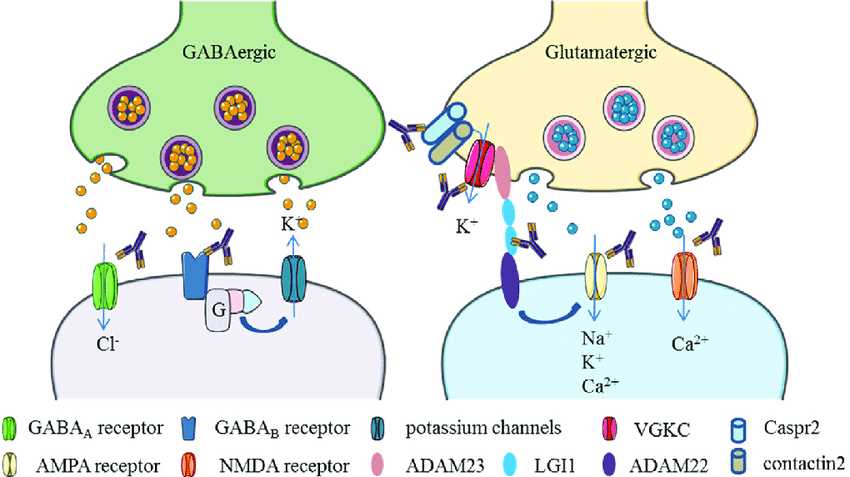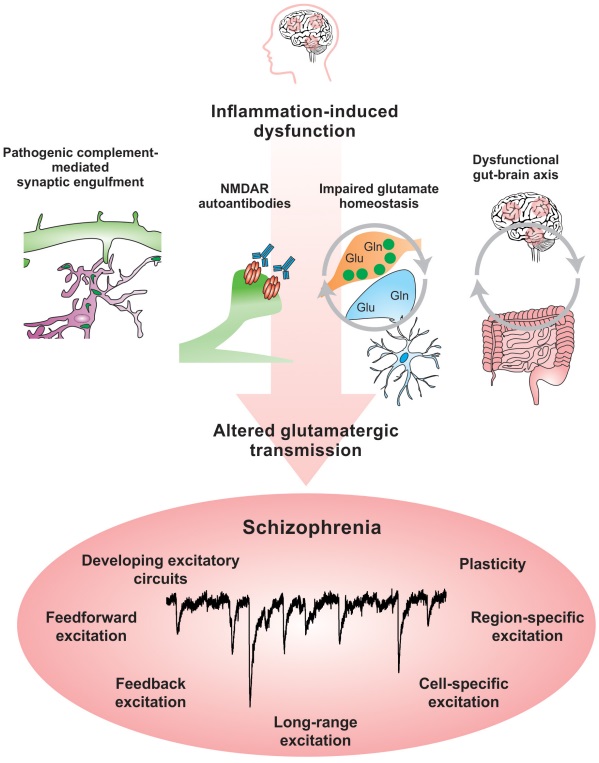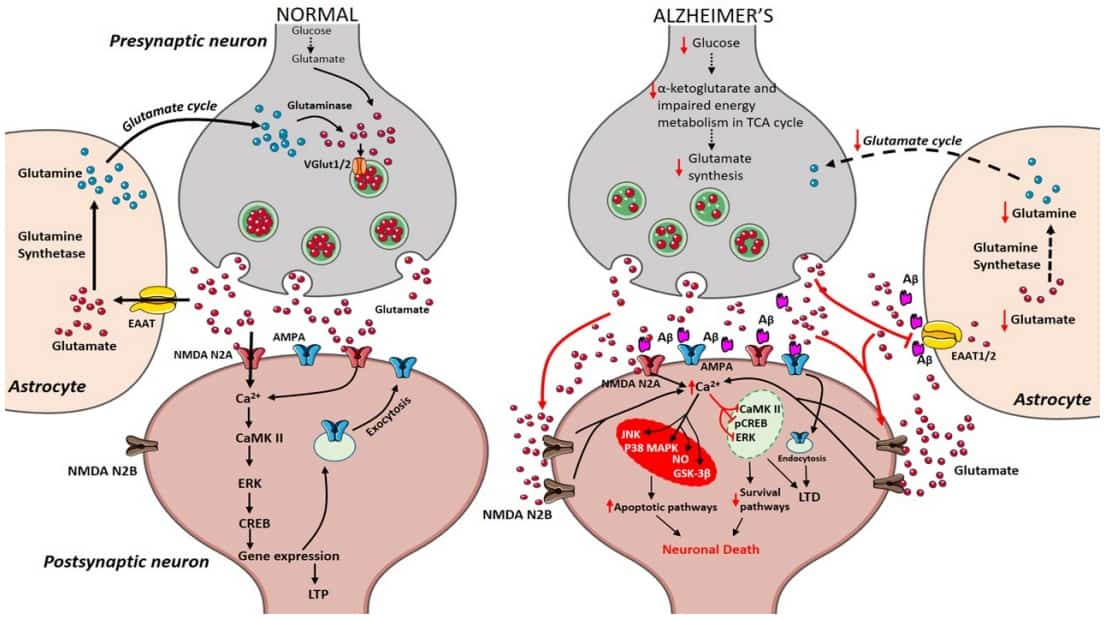NAA Services for Anti-NMDAR Antibodies
Scientists at Creative Biolabs are expert in NAA (natural autoantibodies) research. We have a series of innovative and advanced NAA platforms to provide fast and convenient NAA services for our worldwide customers. Currently, we can provide affordable, high-quality anti-NMDAR antibody marker services for diseases diagnosis and therapeutic with unbeatable rapid turnaround times.
Background of Anti-NMDAR Antibodies
The N-methyl-D-aspartate receptor (also referred to as the NMDA receptor or NMDAR), a type of ionotropic glutamate receptor, is a critical glutamate receptor that mainly distributes in nerve cells. Actually, the NMDA receptor is an ion channel protein or a glutamate-gated ion channel that plays a significant role in neuronal communication. It can be activated and positively charged ions to flow through the cell membrane once glutamate and glycine (or D-serine) binding to NMDAR. Thus, the NMDA receptor is critical in regulating synaptic plasticity and memory function.
The anti-NMDAR antibodies are a type of autoantibodies targeting the NMDA receptor in the brain, which causes an autoimmune syndrome termed as anti-N-methyl-D-aspartate Receptor Encephalitis (ANRE). Patients with ANRE exhibit heterogeneous psychiatric and neurologic symptoms including memory loss, psychosis, hallucinations, seizures, autonomic nervous system dysfunction, and catatonia.
 Fig.1 Neuronal surface autoantibodies target neuronal receptors, ion channels, and/or associated proteins that commonly affect GABA and glutamate transmission in the brain. (Zong, 2017)
Fig.1 Neuronal surface autoantibodies target neuronal receptors, ion channels, and/or associated proteins that commonly affect GABA and glutamate transmission in the brain. (Zong, 2017)
The Role of Anti-NMDAR Antibodies in Schizophrenia
Schizophrenia is a kind of serious mental disorder that mainly affects the thoughts, acts, and feelings leading to abnormal behavior and a decreased ability to understand reality. Psychological symptoms of schizophrenia commonly include false beliefs, unclear or confused thinking, hallucinations, reduced social engagement, emotional expression, a lack of motivation, etc.
Research evidence indicates that anti-NMDAR antibodies may be a cause of the schizophrenia disease since that the anti-NMDAR IgG antibodies recognize the GluN1 subunit of NMDAR, which regulates NMDAR ion channel function including channel open probability, deactivation rate, and allosteric regulation in the central nervous system. Studies revealed that the pathogenesis of schizophrenia may be directly involved in the immune mechanisms, in which the hypofunction of NMDA receptors in brain circuits and anti-NMDAR NAA might be key underlying causes of schizophrenia. This discovery may provide a new therapeutic target for schizophrenia treatment.
 Fig.2 Mechanisms involved in the presence of antibodies in the central nervous system. (Emili, 2010)
Fig.2 Mechanisms involved in the presence of antibodies in the central nervous system. (Emili, 2010)
The Role of Anti-NMDAR Antibodies in Alzheimer's Disease
Alzheimer's disease (AD), a type of chronic neurodegenerative disease, is the most common type of dementia characterized by memory loss and worsens over time. AD presents mental deterioration with diffuse neuronal loss leading to difficulties in memory and thinking skills even to dementia and death. Pathological mechanisms of AD are complex and have not yet been fully elucidated so far, leading to no cure for this progressive brain disorder. It has been reported that the NMDA receptor activity combining with anti-NMDAR antibodies directly associated with AD, for example, NR1/NR2B receptor expression levels decrease with disease progression. The mutations of presenilin in familial AD may also be linked to the NMDA receptor. Anti-NMDAR IgG antibodies recognizing the GluN1 subunit of NMDAR may interfere with the functions of the NMDA receptor in regulating synaptic plasticity and memory.
 Fig.3 Contribution of NMDAR subunits to Alzheimer's disease and schizophrenia. (Paoletti, 2013)
Fig.3 Contribution of NMDAR subunits to Alzheimer's disease and schizophrenia. (Paoletti, 2013)
The Role of Anti-NMDAR Antibodies in Epilepsy
Epilepsy is a type of neurological disorders that affects the brain and causes frequently epileptic seizures. Epileptic seizures are multiple-symptoms conditions depending on which part of the brain is affected. Anti-NMDAR antibodies were found in the cerebrospinal fluid by PET-CT study, confirming the diagnosis of anti-NMDAR encephalitis. Evidence also revealed that epilepsy can be the first manifestation of NMDAR encephalitis. In addition, it was reported that mutation of the glutamate-activated NMDAR subunit GluN2A was implicated with epileptic seizures and interictal discharges. Therefore, neurologists could consider this diagnosis for patients who develop new-onset epilepsy, the frequency and specificity of anti-NMDAR autoantibodies can be regarded as a biomarker and an immunological hallmark of epilepsy.
Features of Our NAA Services
- Provide high-quality service with advanced platforms
- Professional scientist help you improve the performance of diagnostic testing
- High efficiency and timely services
- Cost-effective for customer
For many years, Creative Biolabs has been focusing on diagnosing immune diseases by test the expression levels of related biomarkers. With pleasure, we can tailor high-quality NAA services against novel biomarkers for all kinds of diseases. More importantly, a diversity of premade and custom NAA products and related applications are available for your choice. If you are interested in our service, please do not hesitate to contact us for more details.
References:
- Zong, S.; et al. Neuronal surface autoantibodies in neuropsychiatric disorders: are there implications for depression? Frontiers in Immunology. 2017, 8.
- Moscato, E.H.; et al. Mechanisms underlying autoimmune synaptic encephalitis leading to disorders of memory, behavior and cognition: insights from molecular, cellular and synaptic studies. European Journal of Neuroscience. 2010, 32(2): 298-309.
- Paoletti, P.; et al. Nmda receptor subunit diversity: impact on receptor properties, synaptic plasticity and disease. Nature Reviews Neuroscience. 2013, 14(6): 383-400.

